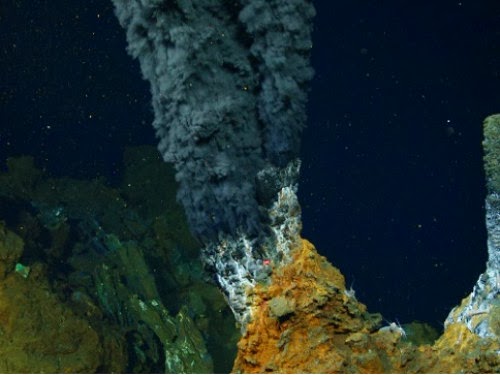
An international team of researchers led by scientists at Virginia Tech and the University of California, Berkeley has discovered that a process that turns on photosynthesis in plants likely developed on Earth in ancient microbes 2.5 billion years ago, long before oxygen became available.
The research offers new perspective on evolutionary biology, microbiology, and the production of natural gas, and may shed light on climate change, agriculture, and human health.
“By looking at this one mechanism that was not previously studied, we will be able to develop new basic information that potentially has broad impact on contemporary issues ranging from climate change to obesity,” said Biswarup Mukhopadhyay, an associate professor of biochemistry at the Virginia Tech College of Agriculture and Life Sciences, and the senior author of the study. He is also a faculty member at the Virginia Bioinformatics Institute. Plant and microbial biology professor emeritus Bob B. Buchanan co-led the research and co-authored the paper.
The findings were described this week in an early online edition of the Proceedings of the National Academy of Sciences.
This research concerns methane-forming archaea, a group of microbes known as methanogens, which live in areas where oxygen is absent. Methane is the main component of natural gas and a potent greenhouse gas.
“This innovative work demonstrates the importance of a new global regulatory system in methanogens,” said William Whitman, a professor of microbiology at the University of Georgia who is familiar with the study, but not connected to it. “Understanding this system will provide the tools to use these economically important microorganisms better.”
Methanogens play a key role in carbon cycling. When plants die, some of their biomass is trapped in areas that are devoid of oxygen, such as the bottom of lakes.
Methanogens help convert the residual biological material to methane, which other organisms convert to carbon dioxide — a product that can be used by plants.
This natural process for producing methane forms the basis for treating municipal and industrial wastes, helps reduce pollution, and provides methane for fuel. The same process allows natural gas production from agricultural residues, a renewable resource.
Methanogens also play an important role in agriculture and human health. They live in the digestive systems of cattle and sheep where they facilitate the digestion of feed consumed in the diet.
Efforts to control methanogens in specific ways may improve feed utilization and enhance the production of meat and milk, researchers say.
Methanogens are additionally a factor in human nutrition. The organisms live in the large intestine, where they enhance the breakdown of food. Some have proposed that restricting this activity of methanogens could help alleviate obesity.
The team investigated an ancient type of methanogen, Methanocaldococcus jannaschii, which lives in deep-sea hydrothermal vents or volcanoes where environmental conditions mimic those that existed on the early Earth.
They found that the protein thioredoxin, which plays a major role in contemporary photosynthesis, could repair many of the organism’s proteins damaged by oxygen.
Since methanogens developed before oxygen appeared on earth, the evidence raises the possibility that thioredoxin-based metabolic regulation could have come into play for managing anaerobic life long before the advent of oxygen.
“It is rewarding to see that our decades of research on thioredoxin and photosynthesis are contributing to understanding the ancient process of methane formation,” Buchanan said. “It is an excellent illustration of how a process that proved successful early in evolution has been retained in the development of highly complex forms of life.”
Dwi Susanti, the lead author, recently received her doctoral degree in genetics, bioinformatics and computational biology from the Virginia Bioinformatics Institute, and is currently a postdoctoral scholar in the Department of Biochemistry at Virginia Tech.
Usha Loganathan, a graduate student in the Department of Biological Sciences in the College of Science at Virginia Tech, also participated in the study. William H. Vensel of the Western Regional Research Center in Albany, Calif., provided proteomics expertise as did Joshua Wong of University of California, Berkeley. Rebecca De Santis and Ruth Schmitz-Streit of University of Kiel in Germany, and Monica Balsera of the Institute of Natural Resources and Agrobiology of Salamanca in Spain also worked on the project
Grants from the National Science Foundation, the National Aeronautics and Space Administration, and the U.S. Department of Agriculture helped support the research.
Note : The above story is based on materials provided by Virginia Tech (Virginia Polytechnic Institute and State University).










